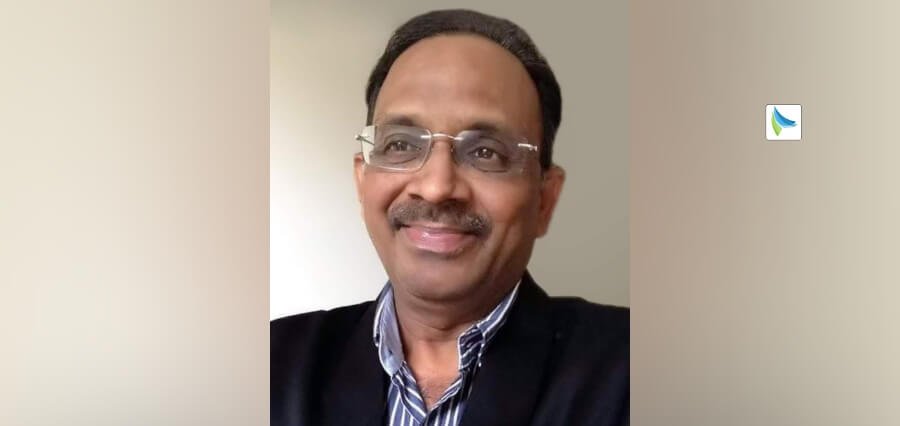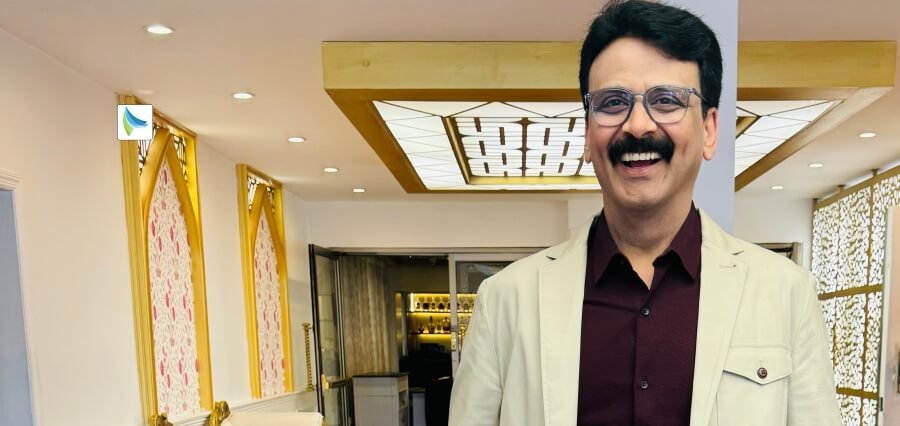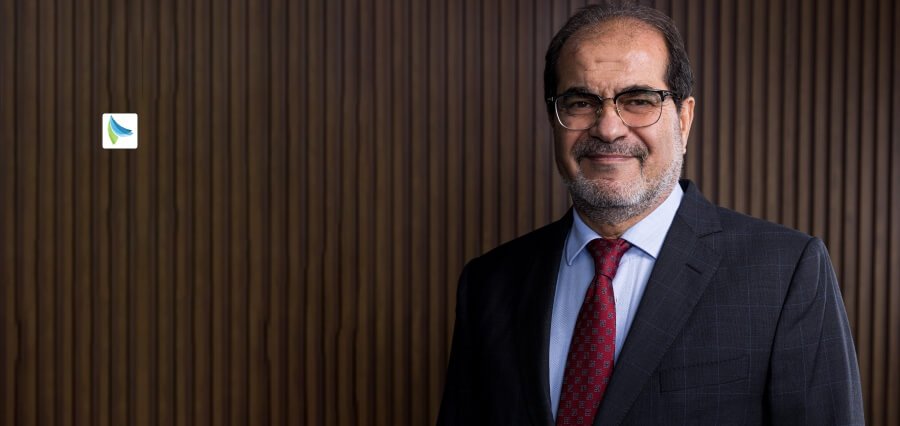Visionary leadership spearheads transformative change in a world where businesses and organizations are exploring the use of tried and true and new technologies and ideas to create a more sustainable future. This means finding ways to reduce their environmental impact while creating new products and services that benefit society.
Corey Glickman is a leader who has the foresight to see the potential of new technologies and ideas, and the courage to implement them benefitting society. He is not afraid to take risks and is willing to challenge the status quo—a step towards a greener future.
He stands as a Sustainability & Design Thought Leader, renowned for partnering with high-profile organizations and institutions to drive impactful advancements. Corey’s journey has been nothing short of remarkable. Named among the top 100 influential designers of the decade, his authorship of the award-winning bestseller ‘Practical Sustainability: Circular Economy, Smarter Spaces and Happier Humans’ showcases unparalleled expertise in uncovering that 50% of sustainability goals can be solved in 5 years and achieve a return on investment in 1 to 3 years.
With a claim like that, let’s delve into Corey’s journey—a testament to pioneering spirit and dedication to continuing to carve pathways in ESG and sustainability!
Rising with Purpose
In the world of transformative industry advancements, Corey stands as a recognized change catalyst and visionary. With a knack for forging high-profile partnerships and assuming leadership roles, he has left an indelible mark. But this journey isn’t just about accomplishments—it’s about a lifelong passion.
“I always knew that I would be a designer,” Corey reflects with a sense of purpose. To him, design isn’t just about aesthetics—it’s a scientific process. It’s about keen observation, crafting hypotheses and putting them to the test.
Throughout the years, Corey’s heroes have guided this path. Raymond Loewy, Charles and Ray Eames aren’t just names—they’re inspirations. They saw design as a solution, a way to unravel complex problems. “Innovative use of new materials, communicating intricate concepts for society, business and culture—they did it all.”
Take “Power of Ten” for instance, a creation that transcended mere design. These trailblazers harnessed design to elucidate concepts like the enormity of scale. Be it “Mathematica” or navigating the intricacies of Cold War politics.
Over four decades, Corey has donned various hats—visual designer, technology designer, business designer, author, and policy creator. His legacy isn’t just industry-leading digital transformation and sustainability through applied systems design engineering. It’s about the passion that ignited this journey. “Design isn’t just a job. It’s a means to shape the world.”
Eco-Centric Commitments
To make sustainability practical, Corey uses a perspective that’s enlightening and relatable. “Sustainability is a complex relationship ecosystem and we can think of it in three key aspects: Environment, Social and Governance.”
Elaborating on the trio of ESG pillars, “E stands for Environment, encompassing the harmony between nature and progress. S represents Social, delving into the people-centric dimensions of sustainability. G symbolizes Governance, the framework that steers responsible actions.”
In today’s world, businesses find themselves at a crossroads, transitioning toward a greener economy. Corey concisely captures the challenge, stating, “Supply chains must evolve into circulytic models. We now grasp the finiteness of resources and the repercussions of waste.”
Amidst this transformation, the role of consumers gains the spotlight. “Consumers are the bedrock of market viability.” “In this era, they view sustainability as the defining cause of their time.” It’s a sentiment that echoes the growing consciousness among people of all walks of life.
Yet, this journey isn’t a solitary one for businesses. They face the twin task of adhering to global regulations while nurturing the dream of a resilient sustainable economy. “I carve paths for businesses to embark on this transformation. I engineer solutions meant to scale across enterprises, utilizing present and future technologies and business paradigms. This includes both public and private partnerships.”
The strength of a project lies in a smooth transition of policy intricacies into tangible solutions. It’s a role that transforms lofty ideals into concrete steps, making sustainability not just a buzzword, but a palpable reality.
From Bytes to Green Initiatives
Sustainable transformations are guided by the Sustainable Development Goals (SDGs). As he eloquently puts it, “I use the SDGs as guideposts, crafting a roadmap by aligning businesses’ aspirations and timelines.”
His approach to business entities takes shape through six pivotal points, seamlessly intertwined to create a sustainable fabric. He lays them out with clarity: “First, businesses need to form a sustainability strategy, the bedrock of change. Next, this strategy aligns with the economic plan, because sustainable aspirations must be economically viable.”
This journey continues, with both tangible and digital assets. “Physical and digital assets are like the two sides of a coin. Both need to be assessed for their sustainability impact.” He delves further, emphasizing the significance of businesses’ supply chains. “A sustainable transformation isn’t isolated; it extends through the supply chain, an ecosystem of shared goals.”
“Creating a strategy to neutralize carbon footprint is pivotal,” he emphasizes. Then comes the aspect of cultural adoption, driven through Organizational Change Management (OCM).
Amidst these strategies, economics play the defining role, “Sustainability transformations in businesses must align with economic feasibility. It’s a symbiotic relationship that should be traceable through central enterprise systems.”
The cornerstone of this methodology lies in digital technologies. Corey resonates with conviction, stating, “Digital tech is the cornerstone, binding all aspects of transformation. Think of GreenIT and IoT as catalysts, making operations greener and more efficient. Visualizations through dashboards and digital twins bring transparency, while data analytics powered by generative AI offer insights that steer the ship.”
Echoes of Change
Corey has mastered the art of translating visions into tangible results. As he aptly puts it, “I map stakeholder personas to their dreams, goals and what defines success for them.” His engagements span a spectrum of high-level interactions. “From C-Suite executives and CSOs to Sustainable Procurement officers, CTOs and product owners, this is the nexus of transformation,” he explains.
His influence reaches far and wide. With an award-winning book titled “Practical Sustainability: Circular Commerce, Smarter Spaces and Happier Humans,” contains insights that disseminate actionable knowledge and encapsulates industry-specific whitepapers.
“I’m a featured speaker at top industry forums and roundtables,” and serves in advisory roles in various sectors. “Governments, public/private partnerships, academic institutions—I’m a trusted advisor and proactive collaborator.”
Glickman uses a roadmap to traverse Data Management, Sustainable Finance, Technology (physical, digital, quantum) and Cultural Adoption. “It’s a sequence that paves the way for transformation and makes executive ambitions a reality at the grassroots level.”
This journey isn’t theoretical—it’s grounded in tangible progress. “Proof of concepts validate the path, while outcome-based contracts ensure accountability.”
Igniting the Eco-Spark
Corey is a seasoned problem-solver and has honed a powerful strategy for driving change. “It starts with setting a crystal-clear problem statement.” With a firm grasp on the challenge, he then takes a leap into the future. “I visualize what a solution should resemble.”
Envisioning isn’t enough—solutions must be robust. “Every solution must tackle three facets: Technical Feasibility, Business Economic Viability and User Desirability.” His secret weapon? A dynamic blend of design thinking and agile methodologies.
“Throughout the journey, constraints will emerge – be it time, resources, or finances.” But, as he notes, these challenges sharpen design. “Like the Marines, we improvise, adapt and overcome.” It’s a mindset that refines solutions, even in the face of adversity.
“A solution’s survival hinges on a robust narrative.” It’s this narrative that guides the design process, ensuring a solution’s resilience. And, if necessary, pivoting to stay aligned with the narrative.
His strategy doesn’t end with design—success metrics are imperative. Furthermore, constraints become catalysts for innovation. “Constraints, when timeboxed and backed by KPIs, drive stellar design,” Corey concludes.
Designing Tomorrow
In the realm of innovation, Corey shines as a master of design thinking, transforming complexity into clarity. “Design thinking mirrors the scientific method: observe, hypothesize, test.” This approach not only harmonizes diverse stakeholders but also empowers them with a common language, forming the bedrock of collaboration.
Design is about orchestrating components for a desired outcome. “Embedding Design Thinking within the triad of technology, business and users unleashes the potential for enterprise-scale solutions.”
“Transitioning businesses to sustainability demands a structured approach.” Design Thinking provides the scaffold–from observation to scaling–for this intricate ecosystem.
From Numbers to Nature
Navigating the complexities of data collection takes finesse. “Data collection can be a maze,” ranging from spreadsheets to IoT streams. “Data’s value blooms when nestled in the digital enterprise backbone.”
“Even with generative AI, expert interpretation ensures impact measurement and thwarts greenwashing.” We can streamline the process using sustainability clouds, harnessing renewable energy and trimming data fat to reduce footprint.
“From identifying vital data to acting upon it, a cycle unfolds: Collect, Store, Visualize, Act, Measure, Report, Adjust.”
Sustainability + Digital
“Core to success is a cross- functional team.” Design thinking and agile frameworks anchor this powerhouse. He knows: “Collaboration tools supercharge synergy.” Workshops, hackathons and even physical co-locations amplify innovation’s pulse.
Mentors fuel growth, while training and learning are relentless companions. “Team cohesion is paramount. Daily stand-ups synchronize efforts, while design and power programming turbocharge output.” All this is tied together by a digitalization backbone.
Innovate Green, Innovate Gold
Glickman is an advocate for perpetual growth navigating career ascent with a shrewd strategy. “Tying learning to career KPIs,” he stresses, ensures upward momentum. Tech partnerships open doorways, with training and certifications as passports. “Design tools wield power,” alongside coding prowess.”
“Blogging and vlogging amplify influence, while industry events sculpt networking avenues.” Corey champions immersive learning too. “Living lab environments spark innovation.”
His secret? “Peer groups bolster insights.” The crux lies in aspiration, “Challenges fuel evolution.” It’s a roadmap for career excellence that he champions with unwavering fervour.
Digital Metamorphosis
Corey is a sustainability pioneer unveiling a blueprint to expedite transformation. “Speed is paramount; waiting until 2050 is no option,” he underscores. With a rich history as the head of sustainability & design at a global IT giant, the company already achieved carbon net neutrality by 2020. “Practical Sustainability is our beacon.” The formula: optimize assets, renewable energy and CSR initiatives.
A striking example emerges in data handling. “Sustainability clouds running on renewables are on the rise,” he acknowledges. However, existing enterprise backbones need sustainability integration.
“We can leverage strategies to bridge the old and new, minimizing tech debt.” Gradual GHG reduction commitments harmonize with backbone evolution. He claims, “In just 3 years, a remarkable 8% reduction in carbon footprint with an enabled digital core is achievable.” In the realm of sustainability, Corey believes in a quicker, brighter future, demonstrating that action today is the true change-maker.
Culture’s Compass
“It’s both top-down from the board and C-Suite and bottoms-up, with each person and resource pivotal. Corporate culture, a tapestry of aspirational goals, governance, funding and support—ignites impact.”
Corey’s insight: “Just as data’s worth mirrors input, culture follows suit—’Genius in equals Genius out,’ and ‘Garbage in equals Garbage out’.”
From Algorithms to Altruism
In the realm of technology and sustainability, we need dual lenses—digital and physical. “Generative AI propels the digital lens, fostering a skilled workforce for tech solutions.” His focus sharpens on “tough tech,” the realm of intricate science-driven engineering.
The reality: “An EV’s heart lies not just software, but in battery sciences.” Economics forms an unyielding truth, where climate tech requires manufacturing and mining, resulting in GHG emissions. “Energy transition is paramount.” The key will be offsetting the expense of innovation through reinsurance modeling.
Blueprinting Change
Three principles: “Speed, Global Just Transition, and harnessing existing technologies will drive acceleration.”
“Global policies and localized solutions unite Norway to Africa.” It’s a vision that resonates on both global and local scales, driving change with urgency and adaptability.



















